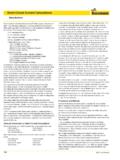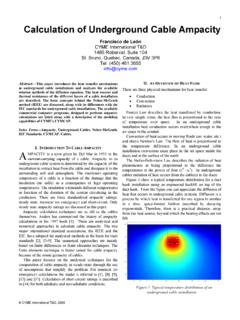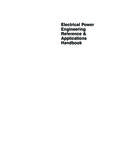Transcription of Guidelines to Understanding Reliability Prediction …
1 Page 1 of 29 Edition 24 June 2005 Disclaimer: No responsibility or liability can be accepted by the EPSMA or any of its officers or members for the content of this guidance document, and the advice contained herein should not be used as a substitute for taking appropriate advice. EUROPEAN POWER SUPPLY MANUFACTURERS ASSOCIATION (Visit the EPSMA website at ) Reliability Guidelines to Understanding Reliability Prediction Revision Date: 24 June 2005 This report gives an extensive overview of Reliability issues, definitions and Prediction methods currently used in the industry. It defines different methods and looks for correlations between these methods in order to make it easier to compare Reliability statements from different manufacturers that may use different Prediction methods and databases for failure rates.
2 The report finds however such comparison very difficult and risky unless the conditions for the Reliability statements are scrutinized and analysed in detail. Furthermore the report provides a thorough aid to Understanding the problems involved in Reliability calculations and hopefully guides users of power supplies to ask power manufacturers the right questions when choosing a vendor. Paper prepared by the EPSMA Technical Committee. Special thanks and acknowledgements to the report champion Paul Conway and Anders Petersson, Erich Schwarz, Ilpo Nisonen, Johann Humer, Karsten Zehm, Mick Garfitt, and Steve Airey for their contribution to this document. The European Power Supply Manufacturers Association was established in 1995, to represent the European power supply industry.
3 Page 2 of 29 Edition 24 June 2005 Disclaimer: No responsibility or liability can be accepted by the EPSMA or any of its officers or members for the content of this guidance document, and the advice contained herein should not be used as a substitute for taking appropriate advice. CONTENTS 1 Introduction .. 3 The Origin and Structure of this Guide .. 3 A Brief Introduction to Reliability .. 3 2 Overview of Reliability assessment methods .. 6 3 Failure rate Prediction .. 6 General .. 6 Application .. 6 Assumptions and limitations .. 7 Prediction models .. 7 Failure rate Prediction at reference conditions (Parts count) .. 7 Failure rate Prediction at operating conditions (Part Stress).
4 8 The failure rate Prediction process .. 8 Failure rate data .. 8 Failure rate Prediction based on IEC 61709 .. 9 4 Reliability Tests - Accelerated Life Testing .. 10 5 Overview of Combined Prediction and Life Tests .. 11 6 Reliability Prediction Methods used by EPSMA Members .. 13 7 A Comparison of Reliability Calculations .. 15 8 Reliability Questions and Answers .. 17 9 Conclusion .. 19 10 Bibliography .. 19 Annex A Reliability measures .. 20 Terms used in the Reliability 20 Reliability (performance) .. 20 Reliability .. 20 Probability of failure .. 20 (instantaneous) Failure rate .. 21 Mean failure rate .. 22 Mean Time To Failure; MTTF .. 22 Mean Operating Time Between Failures; MTBF.
5 23 Mean Time To Restoration; Mean Time To Recovery; 24 Mean Down Time; MDT .. 24 Exponential distribution .. 25 Relationship between measures .. 26 How to calculate time in use from delivery Page 3 of 29 Edition 24 June 2005 Disclaimer: No responsibility or liability can be accepted by the EPSMA or any of its officers or members for the content of this guidance document, and the advice contained herein should not be used as a substitute for taking appropriate advice. 1 Introduction The Origin and Structure of this Guide This guide was produced by EPSMA to help customers understand Reliability predictions and the different calculation methods and life tests.
6 There is an uncertainty among customers over the usefulness of, and the exact methods used for the calculation of Reliability data. Manufacturers use various Prediction methods and the Reliability data of the circuit elements used can come from a variety of published sources or manufacturer s data. This can have a significant impact on the Reliability figure quoted and can lead to confusion especially when a similar product from different manufacturers appear to have different Reliability . In view of this EPSMA decided to produce this document with the following aim: A document which introduces Reliability predictions and compares results from different MTBF calculation methodologies and contrast the results obtained using these methods.
7 The guide should support customers to ask the right questions and make them aware of the implications when different calculation methods are used. To aid the transition to the following chapters, section includes a brief introduction to Reliability . Chapter 2 is an overview of Reliability assessment methods of Reliability models and life testing. The following Chapter 3 explains failure rate Prediction in detail based on the method of IEC 61709. Chapter 4 gives an outline of the observations of an EPSMA member using life testing in accordance with MIL-HDBK-781 test plan VIII-D over a period of 8 years. It also outlines Accelerated Life Testing. Chapter 5 is an extract from an EPSMA members report comparing their theoretical predictions with failures as recorded by failed units returned from customers EPSMA members use a number of Prediction methods and these are compared in Chapter 6 both by prime application and their pros and cons.
8 Chapter 7 shows the result of comparing predicted Reliability (MTBF) of the same products using different methods. Chapter 8 lists questions and answers and Chapter 9 draws some conclusions from the report. Appendix A contains detailed definitions of the terms used in Reliability engineering, exponential distribution models and relationships between measures. A Brief Introduction to Reliability Reliability is an area in which there are many misconceptions due to a misunderstanding or misuse of the basic language. It is therefore important to get an Understanding of the basic concepts and terminology. Some of these basic concepts are described in this section. What is failure rate ( )?
9 Every product has a failure rate, which is the number of units failing per unit time. This failure rate changes throughout the life of the product that gives us the familiar bathtub curve, shown in figure , that shows the failure rate / operating time for a population of any product. It is the manufacturer s aim to ensure that product in the infant mortality period does not get to the customer. This leaves a product with a useful life period during which failures occur randomly is constant, and finally a wear out period, usually beyond the products useful life, where is increasing. Page 4 of 29 Edition 24 June 2005 Disclaimer: No responsibility or liability can be accepted by the EPSMA or any of its officers or members for the content of this guidance document, and the advice contained herein should not be used as a substitute for taking appropriate advice.
10 Early failure period constant failure rate period wear-out failure period t Failure rate Useful life Figure - The Bathtub Curve What is Reliability ? A practical definition of Reliability is the probability that a piece of equipment operating under specified conditions shall perform satisfactorily for a given period of time . The Reliability is a number between 0 and 1. What is MTBF, MTTF? Strictly speaking, MTBF (mean operating time between failures) applies to equipment that is going to be repaired and returned to service, MTTF (mean time to failure) applies to parts that will be thrown away on failing. During the useful life period assuming a constant failure rate, MTBF is the inverse of the failure rate and we can use the terms interchangeably, MTBF1= Many people misunderstand MTBF and wrongly assume that the MTBF figure indicates a minimum, guaranteed, time between failures.










